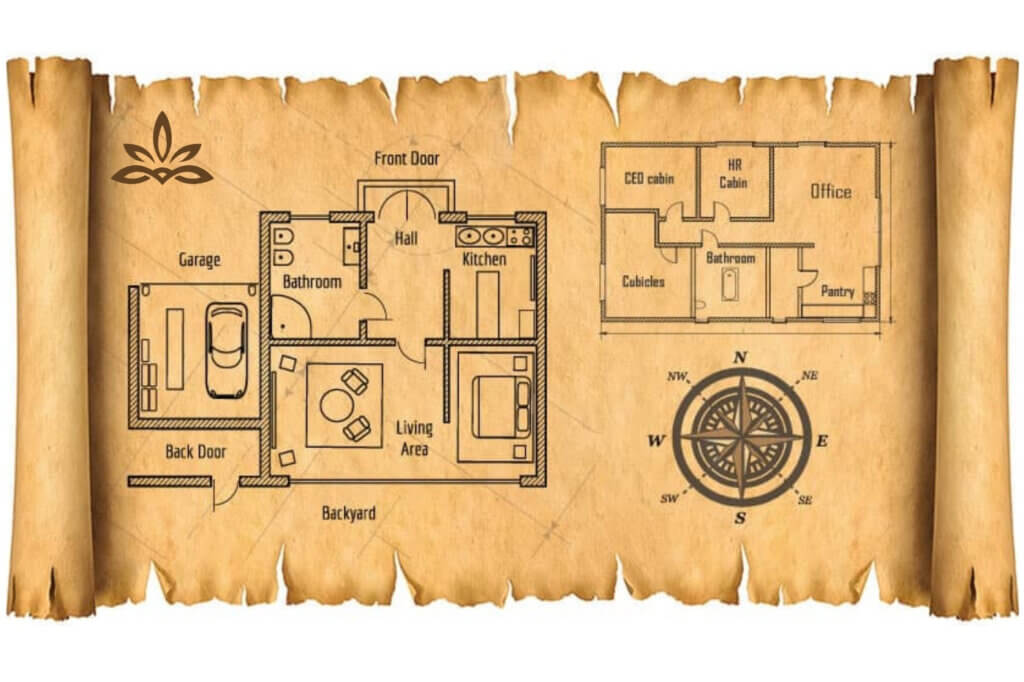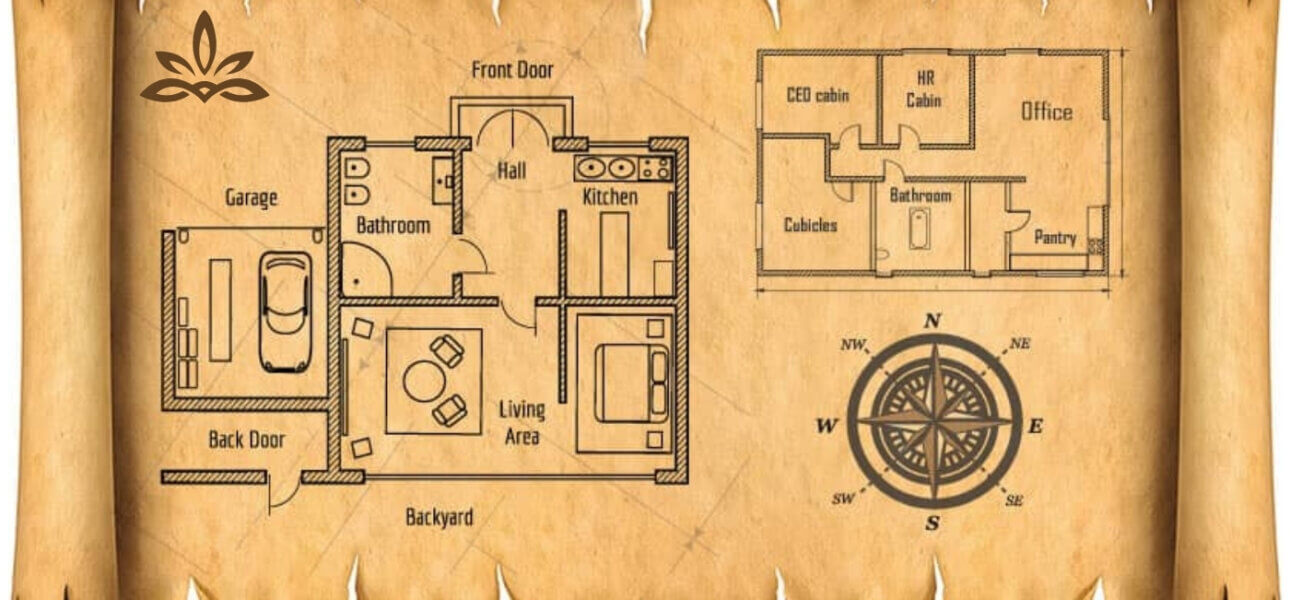A beautiful façade is wasted if your car scrapes the pillar every time you enter. Gate width and turning radius look minor on paper, but they decide whether daily entry is smooth, safe, and neighbour-friendly. If you are planning a home in Padappai or the Oragadam belt, get these basics right from day one.

Why these two numbers matter
- They control how easily your car, bike, delivery van, or ambulance can get in and out.
- They influence pillar placement, compound-wall design, and even landscape.
- They affect Vastu flow, privacy, and noise.
Typical road and vehicle realities in Padappai–Oragadam
- Internal layout roads in quality DTCP-approved layouts are usually wide enough, but cars still need space to swing in without blocking traffic.
- Common cars: hatchbacks and sedans with turning circles around 9–10.5 m; compact and mid-size SUVs around 10.5–11.5 m.
- Delivery vehicles and water-tankers need straighter, wider paths and stronger paving at the gate.
Gate width: working guidelines
- One-car home Plan clear opening of 3.2 m to 3.6 m. This suits hatchbacks and sedans, allows mirrors to pass, and gives buffer for pillar thickness and gate hardware.
- SUV or two-car home Prefer 3.6 m to 4.2 m. If the driveway bends immediately after the gate, go 4.2 m to 4.8 m. A bi-fold or sliding gate maximises usable opening.
- Service and emergency access If your site needs occasional van/tanker access, keep minimum 4 m clear and avoid sharp internal turns or tight pergolas at the entry.
- Pedestrian wicket Add a separate 1.0–1.2 m wicket for daily foot traffic. It improves safety for kids and pets and reduces wear on the main gate.
Turning radius: design it, don’t guess it
- The 90-degree test Most urban plots need a 90-degree turn from road to driveway. If your car must turn immediately after entering, increase gate width and chamfer the inside corner of the compound wall.
- Setback helps you turn A 5–6 m clear depth inside the gate (till the first obstruction) lets most cars align and reverse or nose-in comfortably.
- Chamfers and splays Create a 600–900 mm splay on the gate-side pillar or wall corner inside the plot. This tiny cut makes a big difference to mirror safety and tyre rub.
- Driveway curve radius For smooth turning, aim R = 5–6 m for cars. If space is tight, combine a short straight entry with a wider flare near the porch.
Gate placement with Vastu and practicality
- East- or North-facing plots: placing the main gate toward the North-East quadrant is commonly preferred in Vastu.
- West- or South-facing plots: consider the North-West or South-East quadrant respectively, balancing Vastu flow with vehicle geometry.
- Keep clean diagonal sightlines from inside the home to the gate for surveillance and positive energy.
- Do not force an inauspicious or awkward gate location that causes unsafe turns; a small positional adjustment often satisfies both Vastu and function.
Pillars, hinges, and hardware clearances
- Keep pillar faces outside the clear opening. A 4 m gate with chunky pillars can behave like 3.5 m if hinges and locks project into the path.
- For sliding gates, ensure 1.2× gate-width of side run-off without trees, meters, or steps blocking.
- For swing gates, check that leaf swing does not hit parked cars or the public drain.
Slope, levels, and stormwater details
- Maintain a gentle ramp: 1:12 to 1:15 near the threshold to avoid bumper scrape.
- Provide threshold drain across the gate to stop street water from rushing in during Chennai monsoons.
- If your internal level is above the road, use a two-stage ramp with a short landing so long-wheelbase cars do not bottom out.
Sightlines and safety on community roads
- Keep compound-wall height stepped down near the gate for better exit visibility.
- Move electrical pillars, mailboxes, and nameplates away from the turning path.
- Use non-slip pavers at the entry and reflective studs for night visibility.
Landscape that helps your turn
- Flank the driveway with low, hardy plants instead of raised planters that bite into turning space.
- If you like a green arc, curve turf along the inside of the turn, not concrete—tyres won’t mind brushing grass, but they hate granite edges.
Quick checks before you freeze drawings
- Park your car model on the plan and trace a scaled turning path.
- Print the layout at 1:100 and do a paper car template test.
- Walk the builder and fabricator through hinge positions and latch projections.
- Visit velammalgarden.com for plot sizes and sample layout widths to plan your entry smartly.
- Shortlist plots with better road alignment to your preferred gate side at velammalgarden.com for easier, safer turning.
Padappai–Oragadam local tips
- Morning and evening have higher two-wheeler flow on internal roads. A wider, faster-operating gate reduces blockage and honking.
- Plan for delivery vans: groceries, furniture, RO canisters. Keep a straight 4 m access strip for at least 6 m inside.
- During monsoon, make sure the street drain grating at your frontage is intact and the driveway edge does not collapse.
Sample configurations you can copy
- 12 m × 30 m plot, sedan + SUV
Gate 4.2 m sliding, inside flare to 5.0 m for first 4 m depth, 700 mm inside chamfer, 1:15 ramp, trench drain at threshold. - Corner plot, two-car garage
Dual gates of 3.6 m each on different roads; one is daily use, other for service. Both with 600 mm chamfers and dedicated pedestrian wicket.
Mistakes to avoid
- Pillars too close to the driveway edge.
- Overly ornate hinges that eat into clear width.
- High ramp lip at road joint.
- Big planters or steps right after the gate.
- Ignoring tanker turning until the first summer water shortage.
Simple process to get it right
- Choose your plot and study road alignment.
- Freeze car type(s) and preferred parking style.
- Draw gate clear width and turning path at scale.
- Decide gate type: sliding if space permits, bi-fold if not.
- Finalise splays, ramp, drain, and pillar offsets.
- Cross-check with Vastu zones and adjust within functional limits.
- Review once more on-site with a measuring tape before fabricating.
Call to action
Designing your gate and turn correctly is a one-time effort that repays you every single day. If you are shortlisting villa plots in the Padappai–Oragadam belt, use the above checklist and choose a plot that supports smart access and safe movement.
FAQs
1) What is the ideal gate width for SUVs in Chennai homes?
For most SUVs, plan 3.6–4.2 m clear opening. If the driveway turns immediately after entry, extend to 4.2–4.8 m for stress-free manoeuvres.
2) How do I calculate the turning radius for my car at the gate?
Use a scaled plan and a turning template: allow R = 5–6 m for a comfortable sweep, add an inside chamfer of 600–900 mm, and maintain 5–6 m clear depth inside the gate.
3) Which gate type is best for tight Padappai plots: swing or sliding?
Sliding gates save space and keep the full clear width usable. Where side run-off is not available, bi-fold swing with robust top/bottom guides works well.
4) How can I balance Vastu with practical entry design?
Place the gate in the favourable quadrant for your plot orientation, then fine-tune width, chamfer, and ramp to ensure safe turning. Minor positional tweaks usually satisfy both Vastu and functionality.
5) What small upgrades make daily entry smoother?
Add a threshold drain, reflective studs, non-slip pavers, a separate pedestrian wicket, and keep pillars set back from the clear opening. These are low-cost, high-impact changes.
Ready to plan a plot where the car glides in like a breeze? Explore configurations, road widths, and sample layouts at velammalgarden.com and book a site walk to test your turning path in real conditions.


